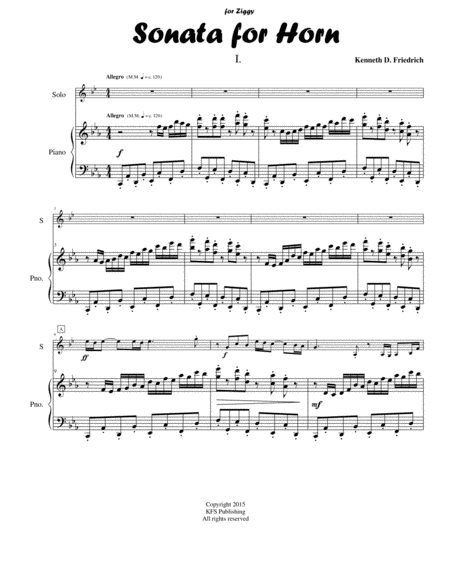French Horn,Piano - Level 5 - Digital Download SKU: A0.699451 Composed by Kenneth D. Friedrich. Concert,Contemporary. Score and part. 44 pages. KFS Publishing #3004769. Published by KFS Publishing (A0.699451). Dedicated to Ziggy, beloved pet of the Dennis Houghton family. Premiered January 28, 2017 at the Southwest Horn Conference in Phoenix, AZ by Mark Houghton, hornist from the Pitttsburgh Symphony Orchestra.This sonata is in four movements.
